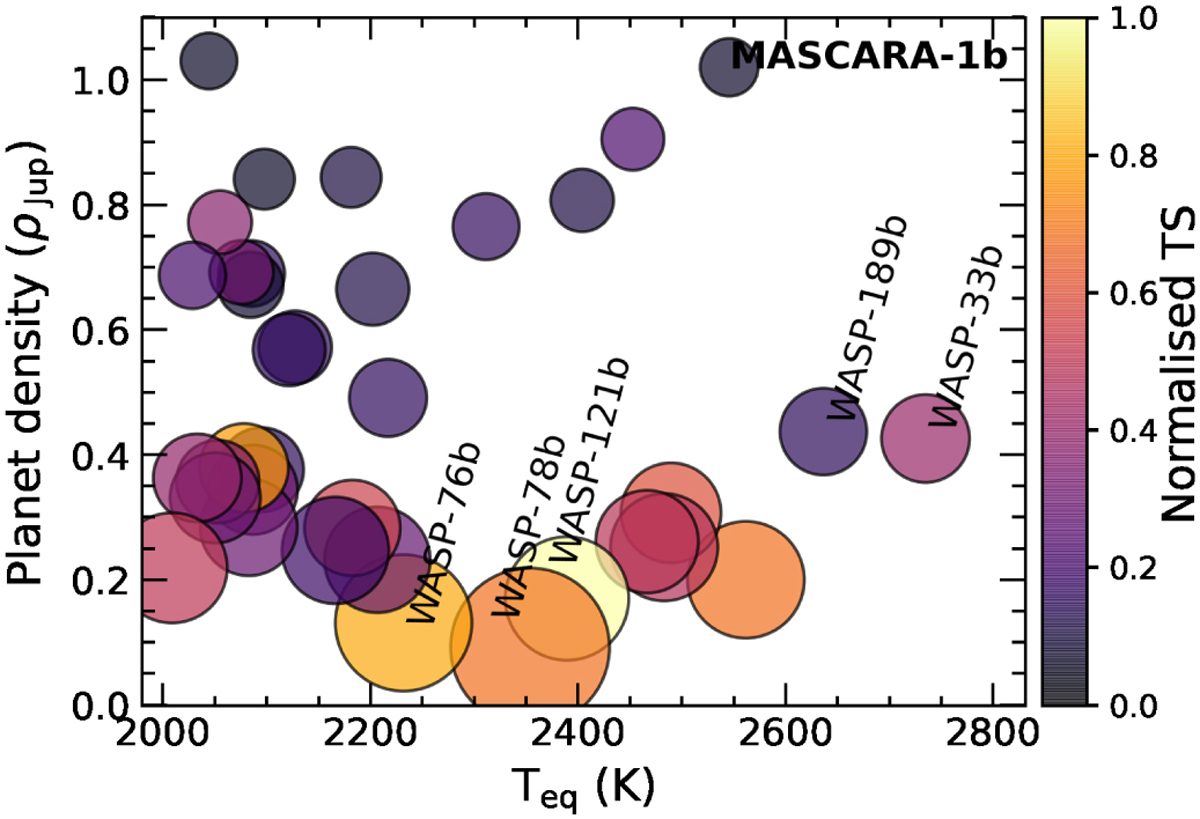Fig. 1

Download original image
Density of the ultra-hot Jupiters with known masses as a function of their equilibrium temperatures (Teq > 2000 K). The colour bar shows the ratio of the exoplanet atmosphere annulus surface and the stellar disc area (TS), considering one scale height (H). The TS is shown normalised for the sample of exoplanets shown: the TS expands from 0 (lowest transmission) to 1 (highest transmission). The size of the markers is indicative of the H of each exoplanet. Very high-density ultra-hot Jupiters (>4ρJup) such as WASP-18b and KELT-9b (with temperature >3000 K) have been discarded for a better visualisation of the sample. The values are calculated with the information extracted from the Transiting Extrasolar Planets catalogue (TEPCat; Southworth 2011).
Current usage metrics show cumulative count of Article Views (full-text article views including HTML views, PDF and ePub downloads, according to the available data) and Abstracts Views on Vision4Press platform.
Data correspond to usage on the plateform after 2015. The current usage metrics is available 48-96 hours after online publication and is updated daily on week days.
Initial download of the metrics may take a while.


